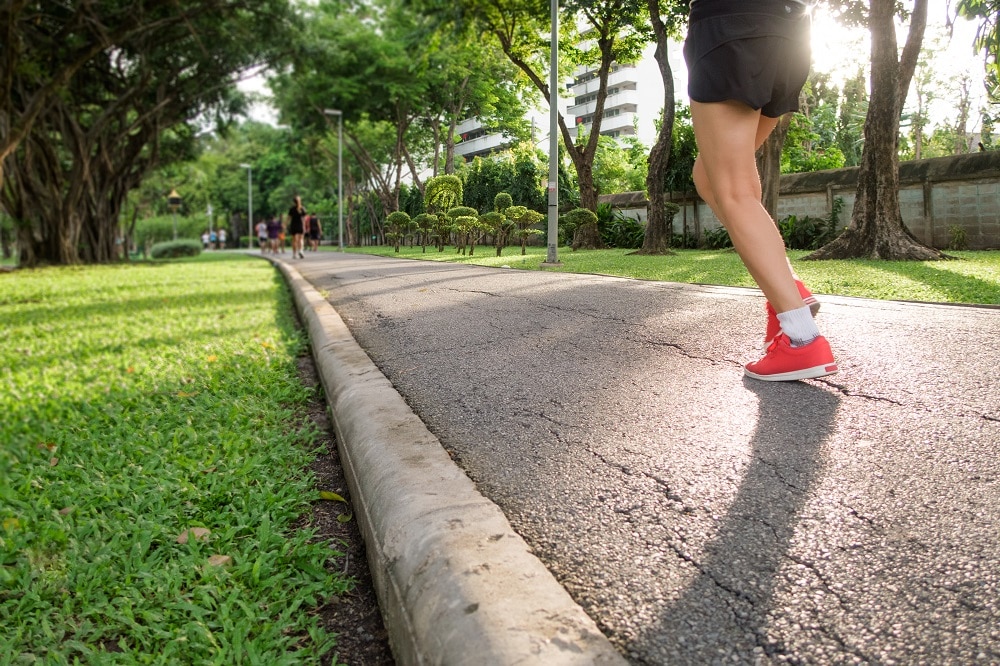
How to Make the Most of Your Neighborhood Run
You’re either the type of person who excitedly anticipates their next neighborhood run … or you aren’t. If you’re the latter, don’t sweat it. Once you learn how to freshen up your runs, make them safer and more effective, you’ll be more inspired than ever.
Scientists and doctors consider running to be one of the most beneficial types of exercise. Studies show that running can extend your life, strengthen your heart (and all muscles), improve your memory, enhance your mental state, as well as prevent obesity, heart disease, type 2 diabetes, high blood pressure, and many other illnesses.
Yes, running is great for the body and soul, but how does one stay interested and motivated while repeating the same workout? The trick is to spice it up and incorporate more exercises. The more physiological benefits you reap from your runs, the more you will want to keep it a habit.
Here are eight tips on how to make the most of your neighborhood runs:
1. Stretch
Stretching before and after a run is important to prevent injuries, while it also helps with muscle recovery and flexibility. Before running, use dynamic stretches (such as walking lunges, leg swings, etc.) and after running, use static stretches (such as standing stretches or sitting stretches).
2. Keep moving
For time’s sake, safety’s sake, and convenience’s sake, try to pick a route where you don’t have to cross a street and can stay on a designated path without having to worry about stop signs, stop lights, and cars. But if that isn’t feasible, continue jogging in place or in circles when at stopped an intersection to keep your heart rate up.
3. Give your arms attention, too
Who says your run has to be all about your lower half? Ramp up the intensity and efficiency of your workout by sneaking in an arm workout while you run. Bring small dumbbells or wear wrist weights during your jog or run to tone your arms, as well.
4. Wear the right shoes
Poor running shoes can cause podiatric problems and can also make running a lot less enjoyable. Invest in a good pair of running shoes (shoes that are specifically made for running) that are designed for your type of feet, whether you have flat feet, wide feet, or feet that pronate. Buying insoles can also increase comfort and decrease the likelihood of foot and lower leg problems.
5. Ramp up the intensity
Work your glutes, calves, abs, and other muscles by incorporating other exercises into your run. Pick routes with inclined streets or hills with paths to get more out of your run. Consider adding strengthening exercises such as lunges or jump squats to some of the beginnings or ends of your runs.
6. Run in intervals
If you’re new to running or have prior injuries, start out with walking or light jogging and only run in short intervals. One trick is to choose landmarks (such as a very large tree, a gas station, a park bench, etc.) and run from landmark to landmark, then walk, jog, lunge or squat to the next landmark.
7. Keep things interesting
Don’t give yourself the opportunity to get bored. Some ideas include: run an alternate route twice a week, listen to different music playlists, run with a friend at a park once a week.
8. Make exercise a habit
Aim for at least 30 minutes of exercise five times per week for optimum health benefits. If you work out regularly, this will also keep you in shape and will make running easier. Find time to run in the morning, evening, in the middle of the day, or any time that’s convenient for you to prevent the likelihood that you have to put off your run. Make it a habit and pretty soon it will be as routine as brushing your teeth.
Safety tips for walking, jogging, or running:
Exercise should be fun and effective, but most importantly it should be safe.
- Drink water before and after your run; if you’re newer to running, bring water with you
- Always stay alert and trust your intuition
- Run against traffic
- Don’t run in hidden areas or places out of public view unless you’re with a friend
- Wear bright colors
- Bring sunglasses or a visor if running on a sunny day
- Wear sunscreen
- If you have serious allergies, diabetes, or other serious illnesses that EMTs should be aware of in case of an emergency, always wear a medical alert bracelet

Join our Senior Wellness Society for the latest news on Medicare and tips for healthy living in San Diego!
Sign up now ›Are you looking for specialized medical care in San Diego?
Our directory has more than 850 doctors in San Diego County of various specialties who are available to help you.
Find a doctor